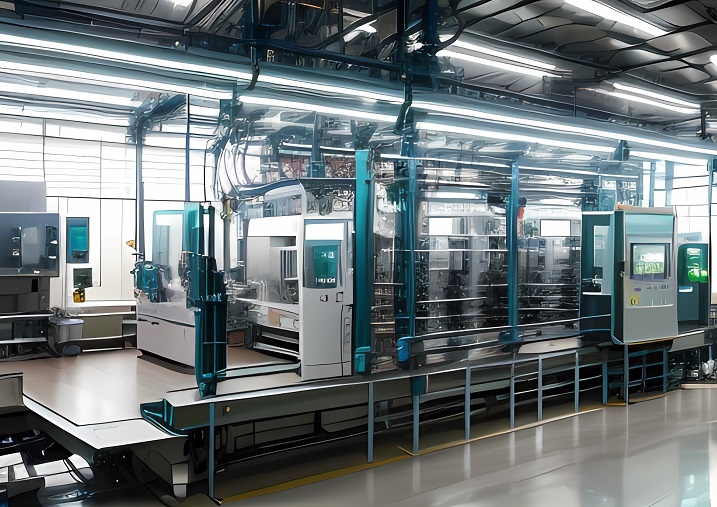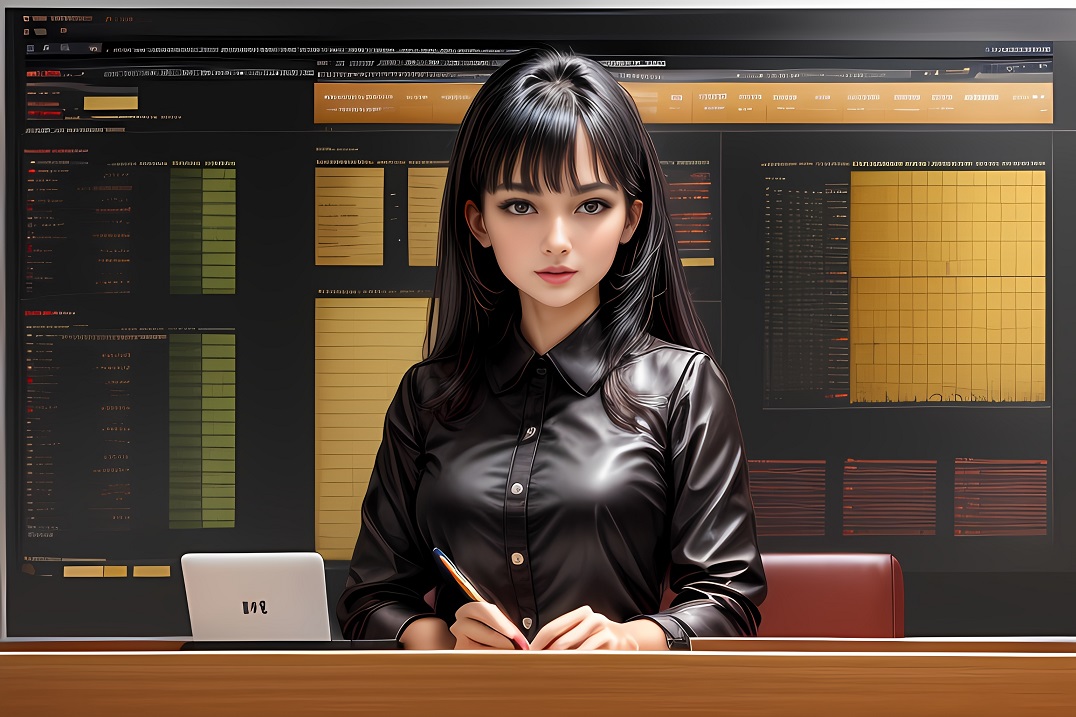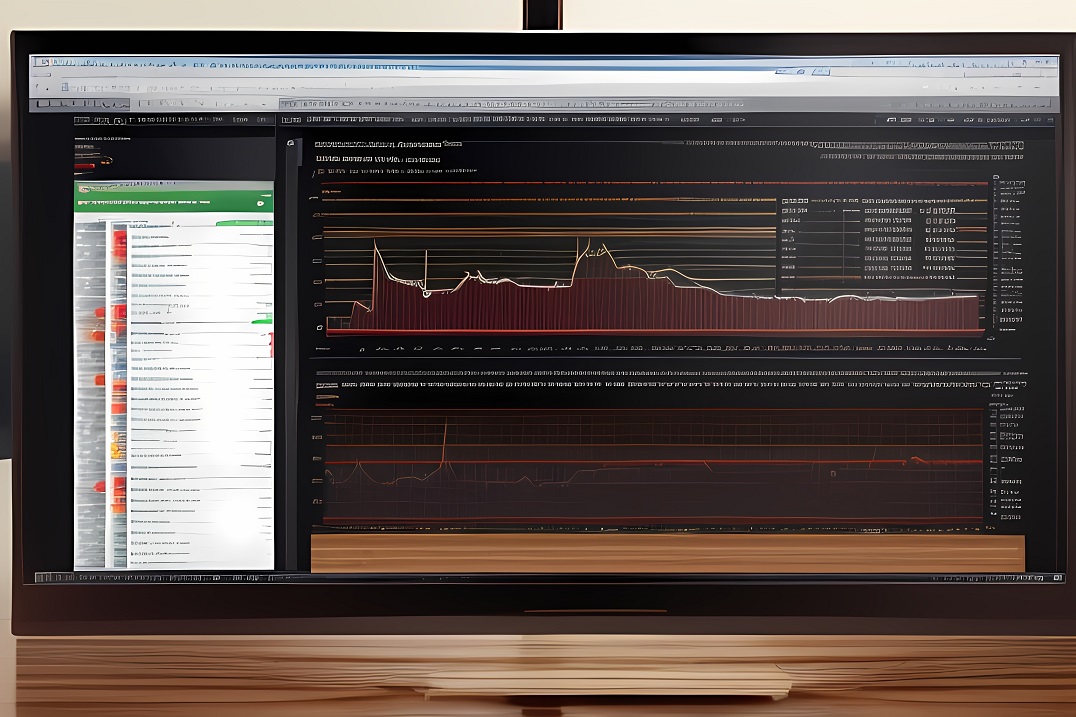What are the main functions of ERP system?

The help of ERP system to enterprises is definitely not as simple as how many users follow up, how much product inventory is, and how much sales performance is. , to conduct multi-dimensional statistical analysis, so as to help enterprises make scientific and reasonable decisions from an overall perspective, and help enterprises develop faster and better. For example, the quantity of replenishment, it is necessary to integrate the sales, procurement and inventory of all similar products, use this information to come up with a better plan, and then provide a scientific and reasonable order quantity. This is the core meaning of ERP system to the enterprise. Among them, the statistical function of ERP system becomes the key. Here, we take LongRiverTech management software as an example to tell you about the role of statistical functions.
Nowadays, with the gradual expansion of the business and scale of the enterprise, the traditional management method is obviously unable to meet the needs of the sustainable development of the enterprise. If it is not changed in time, it is likely to be eliminated by the market. And ERP system is an essential tool for enterprise information management at present. It can improve the office efficiency of enterprises, help enterprises get rid of the shackles of traditional management, accelerate the pace of enterprise development, and enable enterprises to be in a favorable position in market competition. So what is the purpose of the enterprise implementing ERP system?
As the core engine, LongRiverTech software provides powerful technical power for ERP system. LongRiverTech ERP system supports the cash flow of multiple businesses, accounts and organizational combinations, and dynamically detects business operations. LongRiverTech ERP system realizes the mastery of the overall operation of enterprise resources through the collection of statistical data through flow, and meets the needs of the industry.
LongRiverTech ERP system can be used in the fields of domestic trade management, foreign trade management, production management, process management and engineering management. The core modules of LongRiverTech ERP system include: inventory management, purchase management, sales management, processing and manufacturing, capital management and report modules. LongRiverTech ERP system also has some expansion modules: supplier management, customer management, MES, import and export management, financial management, dashboard and APP, and can be used to comprehensively manage the special needs of the industry.
The micro member management system is a business application platform based on WeChat. It is mainly composed of WeChat official account and mobile business application platform. Help enterprises realize the marketing and service center with massive WeChat users as the entrance, and implement the mobile Internet strategy. The intelligent terminal store management software is a professional store management system designed for the current industry brand store management, focusing on business control, analysis and operation, using a variety of interconnection technologies to collect retail data of terminal stores, providing a variety of indicators to analyze and guide the operation of the store , to help stores achieve refined management. At the same time, centering on member management, it supports a variety of flexible promotional activities to effectively improve store retail performance. It is conceivable that the establishment of the product database (BOM) restricts the implementation of resource management. Everyone says that the implementation of resource management is difficult. We understand that the most difficult thing is the improvement of the product database. Many companies implement resource management slowly or abnormally. It is often stuck on the imperfection of the database. However, as long as the enterprise has a strong implementation team and the implementers have the spirit of perseverance, and overcome the management and data barriers, the road to successful implementation of resource management will be revealed. The core parts of the company, such as product sales orders, production process, and product quality traceability, were sorted out. After sorting out the management issues, the company's financial, sales, procurement, production and other business processes are standardized, and all departments use a set of data to speak on the same platform. Not only can the source of the problem be better traced, but it can also help the entire management to make decisions. Through information sharing, the system helps the company reduce inventory, reduce capital occupation, and avoid material backlog or shortage. Guarantee the customer's delivery date and improve the company's labor productivity. Manufacturing companies lack universal unified codes, especially in global group companies. If the basic data information is not well maintained, it is impossible to manage it through computers. The unity and completeness of sorting out data has become a "fine work" to improve enterprise management. The actual product production line is in charge of the relevant processes in the process flow. Before formally configuring the system and going online, it is necessary to carefully check the basic information such as materials, bills of materials, and business partners in the system with the actual data information, and manage the material master data with barcodes. Management consulting generally includes: information planning, human resources consulting, process optimization, group management and control, legal consulting, financial planning, intellectual property planning, etc. Traditional manual management methods have been unable to control the production capacity of on-site machines, mold conditions, teams and production lines, and are facing challenges such as low utilization of production capacity resources and unable to quickly respond to customer needs. There are many types of production capacity, fast replacement, and frequent design changes, which pose a great challenge to the company's ability to accept orders. How to effectively integrate resources from research and development to production/planning and supply chain. With the general trend of consumption upgrading, the industry is increasingly focusing on user experience, how to upgrade products, marketing channels, and service methods to meet user needs. Empower digital transformation through the intelligent value of the ERP system cloud platform, take advantage of the opportunity to upgrade informatization management, lay out informatization to open up key operational links, and create a diversified industrial kingdom.

The menu authority of LongRiverTech ERP system adopts an adaptive menu layout, and supports three menu layouts: the computer version tree, the tablet version tiled, and the mobile version bottom. The left menu of the desktop version, the upper navigation menu of the tablet version and the lower navigation menu of the mobile version adopt an adaptive menu layout. LongRiverTech ERP system menu authority includes: role menu authority configuration, role access authority to business process, user group menu authority configuration. The easy-to-use ERP system supports users to conduct comprehensive query, transaction flow query, capital flow query, inventory flow query and processing flow query through business flow. LongRiverTech procurement management functions include: purchase order, purchase return order, purchase receipt, and business documents.
In order to save trouble, many business owners go directly to the general resource management system. The system has attracted a large number of die-hard fans by saving trouble and money, but the resource management system is not a simple matter of simply buying back the system. It is necessary for managers to reorganize work processes or adjust departments to better integrate enterprise resources, improve work efficiency, and save resources. Generic resource management cannot meet their daily needs. We analyze the unique characteristics of the industry from three aspects: First, styles and colors are complex, and impartial styles, colors, and sizes are unattainable in the industry's general resource management logistics module. It is not feasible to use a single standard resource management to deal with product diversity. Therefore, enterprises should choose the appropriate enterprise resource planning system according to the characteristics of the industry. Second, the product life cycle is very short. From entering the market to exiting the market, it usually only takes two to three weeks. It can be seen that the life cycle of the product is very short. What does it mean? In order to adapt to product changes, enterprises must make adjustments to the resource management system every two to three weeks, and most common resource management is impossible. What is the difference between resource management software? Finally, sales of the product are very volatile. It is impossible to predict the next explosion. Until the sales figures come out, everything depends on experience and luck. Explosive currency needs to be added to production immediately, and prices are lowered if they do not meet market demand, and promotional processing becomes a burden for enterprises. The instability of sales makes it difficult for enterprises to control inventory, and inventory management should be carried out through resource management. WMS mobile warehousing system provides a cloud service platform for medium and large enterprises, group enterprises, and listed companies. Mobile Warehouse Management System (WMS) is a set of extended products aiming at the in-depth and refined management of enterprise warehouse business operations. Perfect solution. This solution can achieve the precise management of warehouse positions, reduce the error of goods in and out data, the rational deployment of warehouse personnel tasks, and the statistical analysis of personnel performance evaluation, etc., and achieve the best results for a series of the highest management needs expected by many enterprises. The sales management functions of the resource management system include: sales plan, sales file, sales opportunity, sales quotation, sales contract, sales order, sales delivery, sales payment, sales return, and commissioned sales. From the storage of finished products, to the distribution of first-class and second-class goods, and finally to the terminal retail, an online and offline closed loop of sales feedback analysis and early warning adjustment management is formed. Signing a comprehensive IT consulting service contract can provide milestone expert review, project change coordination, risk control seminars, supplier relationship coordination, CIO office outsourcing, etc. As the main services, to achieve successful launch and subsequent successful and stable operations. The order management system is flexible and diverse, automatically splits and merges orders, and supports multiple marketing strategies such as pre-sales and buy gifts. Through the ERP system cloud platform, the batch processing of orders is efficient, and the standardized product file management makes the product systematized. Multi-level sub-warehousing management in different places, accurate synchronization of inventory across the platform, inspection, inventory, and allocation of goods in one step, intelligent generation of purchased goods and quantities, and alert inventory reminders to prevent stockpiling or out-of-stock. Resource management management software is of great help to the company's financial, inventory and distribution management and control capabilities, and business processing. In the face of a market that is difficult to grasp, the company's response speed and reaction speed have been improved, and efficient market operation has been realized. In order to better use the system and carry out information construction, the management team in the enterprise plays a pivotal role. The training and assessment of system users is the foundation of the application of enterprise information systems. Information departments need to conduct induction assessment training for key positions related to the system. Especially the key points of assessment control, such as warehousing, logistics, order processing, etc. The software is easy to operate, supports document copying, pasting, documents and files, supports import and export of excel tables, and import and export of inventory formats.
LongRiverTech ERP system user management includes: user login, registration, password change. LongRiverTech ERP system supports role and user group configuration. User configuration of roles is realized through role maintenance. Through user group maintenance, users can configure user groups. Small and medium-sized enterprises focus on production and processing to drive upstream procurement and downstream order management. The conventional ERP system satisfies the large-scale production management of batch products. Mass-produced products with a high degree of standardization can quickly reach saturation through large-scale expansion, leaving a lot of room for growth in non-standard orders that require individual customization. For more innovative non-standard orders, it is increasingly dependent on the auxiliary management of computer systems to cope with the explosive growth of business data. ERP system statistical report functions include: business flow table, purchase report, sales report, inventory report, processing and manufacturing report, capital report, receivable and payable report, transaction statement, bank statement. Through the data configuration of LongRiverTech ERP system, the subject limit configuration and subject account relationship setting can be performed. LongRiverTech ERP system purchase order includes: create purchase order, view purchase order flow, reverse purchase order, approve purchase order, view purchase order documents, print purchase order documents, and export purchase order documents.

Group store sales final accounts: It is used to monitor the sales plan of stores in each region of the group, including annual plan, monthly plan, weekly plan, and the completion of the plan. BOM is the basis for the operation of the resource management system, and the breadth and depth of resource management implementation depend on the coverage and data content of BOM. The establishment of BOM, especially the timely entry of new product BOM has become a bottleneck restricting the successful operation of resource management. Real-time data collection, real-time financial control and real-time feedback of sales data, leaders keep abreast of the company's operating conditions, make timely predictions on the market, and at the same time increase the width and depth of management, and adopt one-to-one correspondence between people, money, goods, and stores and warehouses. Strictly control various management, powerfully avoid risks, support multiple entry styles, manual, barcode, and QR code entry. Competition in the domestic apparel industry is intensifying, customers have more and more personalized needs, and order patterns are becoming more and more complex. In order to maintain a leading position in the industry and build an international business wear brand, enterprises must use information technology to transform and upgrade the management and production models of traditional industries, and change the original large number of manual operations. In order to adapt to the competitive environment of the clothing industry in the new era, it is necessary to use modern information technology to manage its clothing sales and inventory. Resource management is just a kind fo instruction plan. In order to ensure the realization of resource management, it is necessary to consider the implementation and control of the plan, so it has developed into Manufacturing Resource Planning-MRP Ⅱ (Manufacturing Resource Planning), and the important content is the workshop operation plan-PAC ( Production Activity Control) and control.
ERP system integrates all internal resources of the enterprise, and plans procurement, production, cost, inventory, distribution, transportation, finance, and human resources, so as to achieve the best combination of resources and the best benefits. In the challenging environment of ever-changing market opportunities, prices and service levels, enterprises must constantly change and improve their business models and enhance their competitiveness. In the past, only focusing on the internal process improvement of the enterprise, the improvement of product development and manufacturing level is no longer enough to face the current market environment. The construction of ERP system provides a new development idea for enterprises.